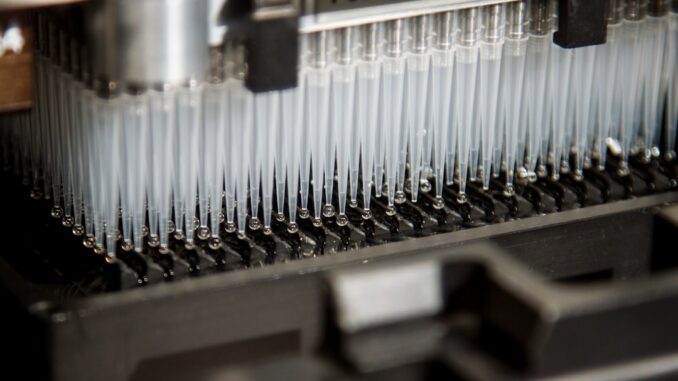
Summary
New research suggests the PLXNB1 gene influences Alzheimer’s plaque size and toxicity, potentially offering new treatment avenues. This discovery sheds light on the role of glial cells in plaque formation and brain inflammation. Further research could lead to targeted therapies mitigating Alzheimer’s progression.
Secure patient data with ease. See how TrueNAS offers self-healing data protection.
** Main Story**
Okay, so there’s some really interesting stuff coming out about Alzheimer’s, and I wanted to run it by you. Specifically, this new study – NIH funded, of course – is pointing to a gene called PLXNB1. It looks like it might be a major player in how those pesky beta-amyloid plaques form, you know, the hallmark of Alzheimer’s. The research, which you can find in Nature Neuroscience, suggests that if we can figure out how this gene works, we might actually be able to clear those plaques and chill out the brain inflammation that comes with them. That would be a game-changer, wouldn’t it?
The Glial Cell Balancing Act
Now, PLXNB1 isn’t exactly new to the Alzheimer’s scene. There’s been previous research connecting it to the disease. But, this study digs deeper into what the gene actually does, especially concerning glial cells. Think of glial cells as the brain’s support system. PLXNB1 is responsible for producing Plexin-B1, a protein that guides brain cell growth. What they did was, they took brain tissue from people who passed away with Alzheimer’s, and they messed around with mice that were genetically engineered. The results? A fascinating dance between PLXNB1, glial cells, and plaque creation.
Plexin-B1: A Brain Tissue Mystery
The initial findings were pretty clear: folks with Alzheimer’s had higher levels of Plexin-B1 protein, especially around the plaques. Further digging showed that astrocytes, a kind of glial cell, are the ones pumping out the Plexin-B1 proteins. Now, in Alzheimer’s, these astrocytes go a little haywire. They become “reactive,” changing shape and chemistry due to brain injury or infection. You know, it’s like when your immune system kicks into overdrive after getting a cold. These reactive astrocytes, along with microglia (the brain’s clean-up crew), build these net-like things, peri-plaque glial nets, around the amyloid plaques. But here’s the crazy part: the microglia in those nets actually help shrink and compact the plaques! Maybe making them less toxic?
Plexin-B1’s Double-Edged Sword
So, turns out, PLXNB1 isn’t so simple. In mice that didn’t have an active PLXNB1 gene, the plaques were smaller, less dense, but… the inflammation was worse! More reactive astrocytes and microglia, meaning more brain inflammation. On the other hand, mice with active PLXNB1 had bigger, denser plaques, but less glial activation, and, therefore, less inflammation. See, it’s a balancing act. A really delicate one. Plexin-B1 is pulling the strings on both plaque compaction and the brain’s immune response.
New Hope Through Glial Nets?
That being said, this whole glial net thing could be a new avenue for treatment. If we can target the genes that control those nets, like PLXNB1, maybe we can tip the scales in the right direction. Fine-tuning the balance between plaque compaction and glial activation… that’s the dream, right? It’s a long shot, I know, but you have to admit, it is pretty exciting. I think this research could be important to the development of future therapies for Alzheimer’s.
Advancements in Geriatric Care
Of course, it isn’t just about Alzheimer’s. Geriatric care in general is making huge leaps. We’re seeing:
-
Technological Innovations: I’m talking wearable health trackers that are constantly giving health updates, telehealth services to bring appointments into your home, and smart home technology that can make your life easier. Not to mention remote monitoring systems that make it possible for seniors to manage their health independently.
-
Home-Based Care Models: Telemedicine and remote monitoring, letting doctors and nurses come to you. Lower hospital readmissions, more independence for patients… it’s a win-win.
-
Socially Assistive Robotics: You know, robots that can help with things like eating, personal hygiene, even remembering to take your meds. We’re not quite there yet, but it’s coming. Could be a game-changer for those with physical limitations.
-
Expanding Healthcare Access: Things like community programs, bringing geriatricians, social workers, primary care physicians, and nurse practitioners together. Making care more efficient, more accessible. Sounds good, right?
These advancements show the commitment to improving the lives of older adults through innovative healthcare solutions. As research continues to uncover the complexities of age-related diseases like Alzheimer’s the future of geriatric care holds immense promise for enhancing senior health and promoting vibrant aging.


So, glial nets are the brain’s attempt at abstract art critiquing amyloid plaques? “Hmm, needs more compaction, less toxicity… maybe some reactive astrocytes over here?” I wonder if art therapy could somehow trick them into overdrive for good.
That’s a wonderfully creative take! The idea of glial cells as art critics is fascinating. Your point about art therapy potentially influencing them is intriguing. Perhaps specific colors or patterns could stimulate beneficial activity? It’s an avenue worth exploring!
Editor: MedTechNews.Uk
Thank you to our Sponsor Esdebe